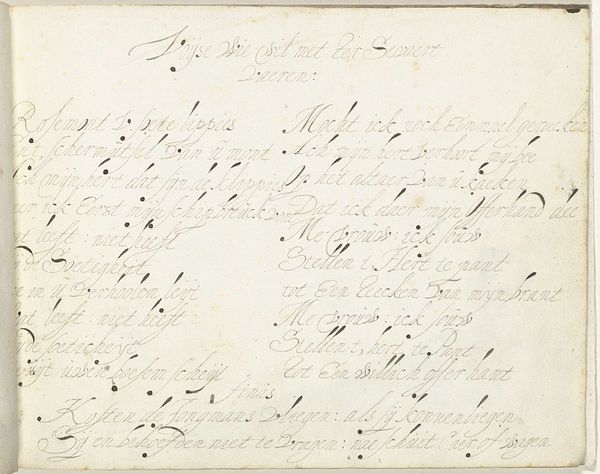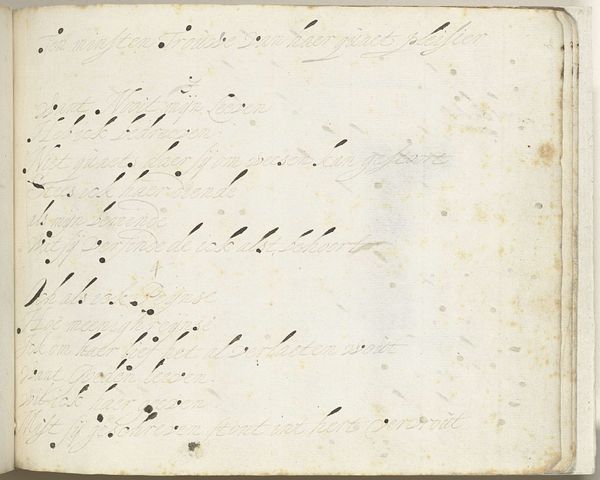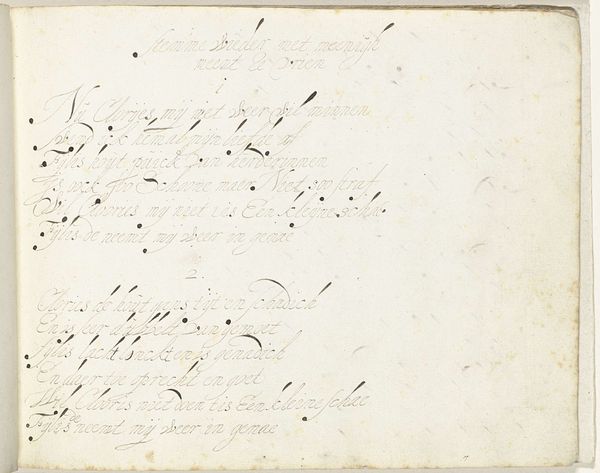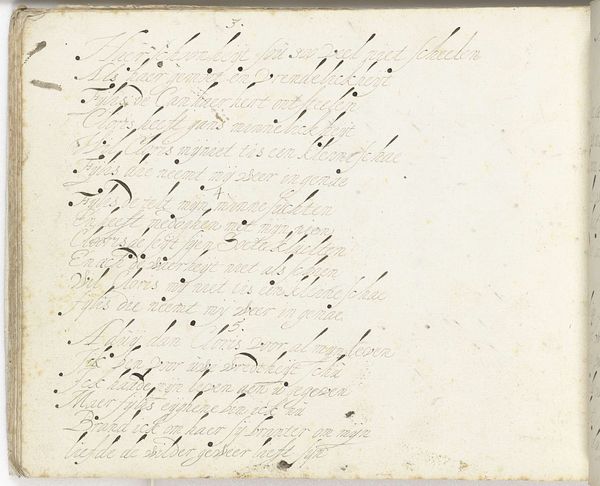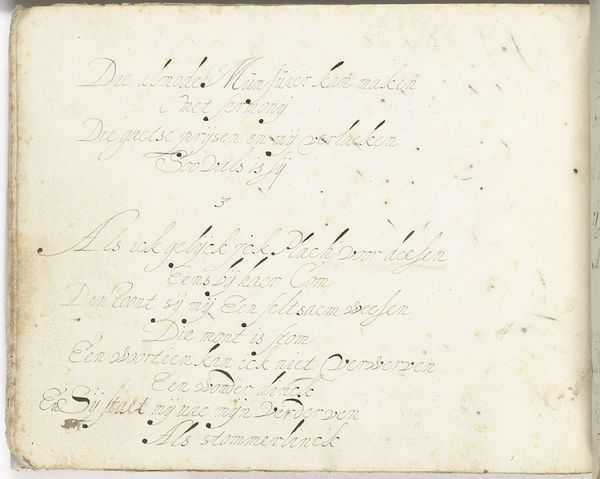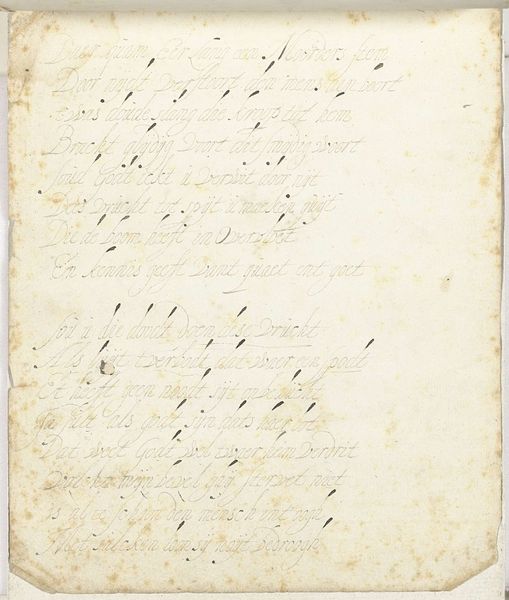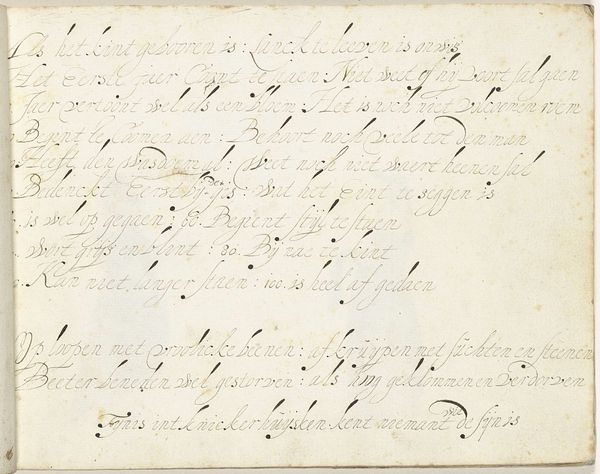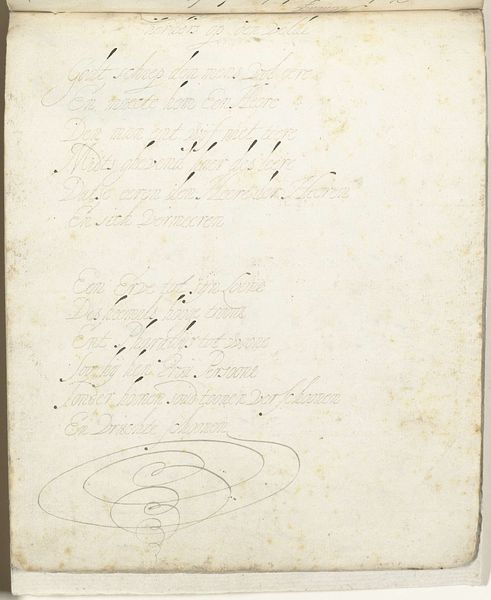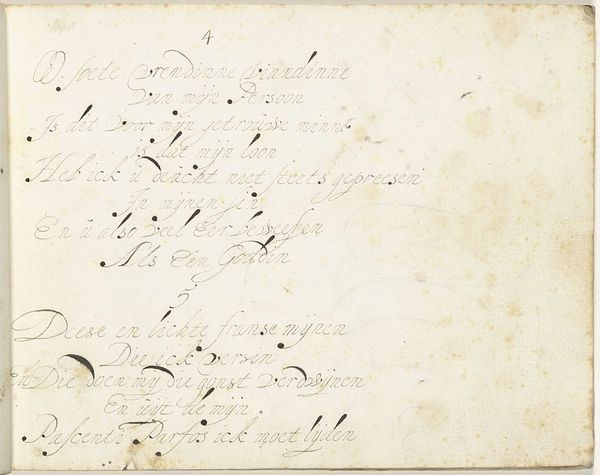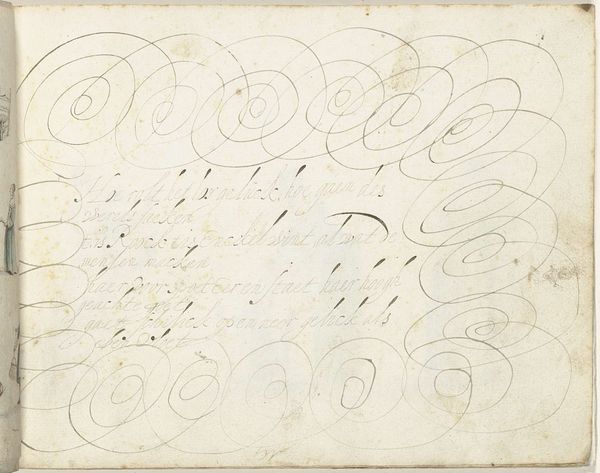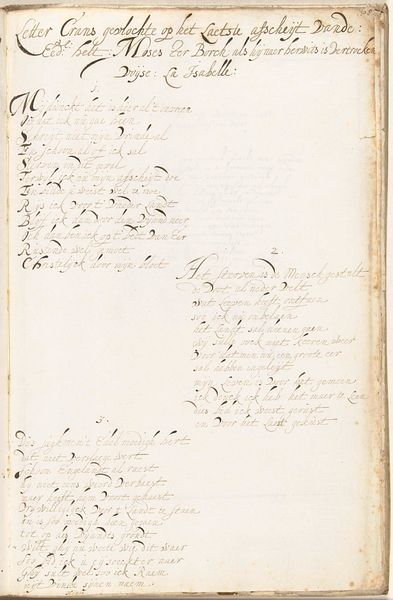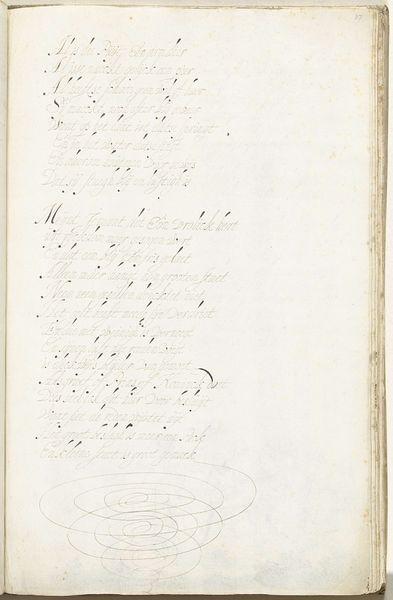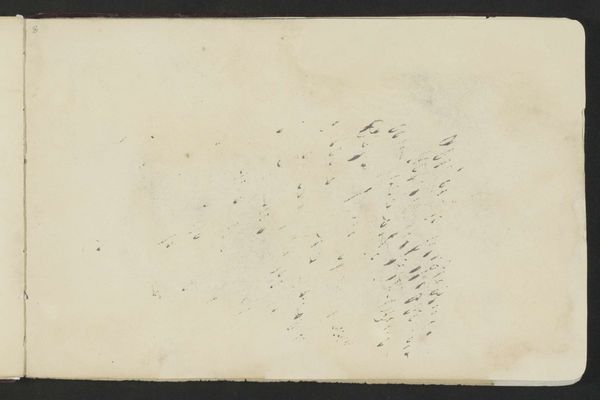
drawing, textile, paper, ink
#
portrait
#
drawing
#
narrative-art
#
dutch-golden-age
#
textile
#
paper
#
ink
#
watercolor
#
calligraphy
Dimensions: height 155 mm, width 211 mm
Copyright: Rijks Museum: Open Domain
Editor: This is "Pastorale (deel 1)" created in 1650 by Gesina ter Borch. It appears to be ink on paper, a handwritten manuscript almost. The delicate, flowing script gives the work an intimate, personal feel, like a glimpse into someone's private thoughts. How do you interpret this work? Curator: The lines created by the script's calligraphic forms function as compositional elements, creating a textured surface across the page. Observe how the consistent slant and spacing establish a rhythmic pattern, almost like musical notation, directing the eye. The very deliberate application of ink suggests an attention to detail, emphasizing each character's unique shape. It prompts one to contemplate on form itself. How does the absence of visual imagery affect your perception? Editor: It makes me focus on the rhythm of the text, how the lines dance across the page, and even the subtle variations in the ink’s darkness and pressure. So it is really the writing style instead of the content? Curator: Indeed. The content of the inscription becomes subordinate to the aesthetic properties of its execution. The artist uses the grid of language to create structure through ink on the canvas of textile; the materiality here dictates that form supersedes any representative imagery. Editor: So it is a case of the medium being the message. I hadn't thought about it like that. It almost seems modern in a way, this focus on pure form and materiality. Curator: Precisely. By isolating and emphasizing these fundamental aspects, ter Borch challenges conventional notions of art as mere representation and engages us to appreciate form. I leave here wondering, where did she get these letters from, as a point of future consideration. Editor: This gives a fresh view of manuscripts as art. I learned a lot by just examining line, texture, and the relation to the content.
Comments
No comments
Be the first to comment and join the conversation on the ultimate creative platform.
